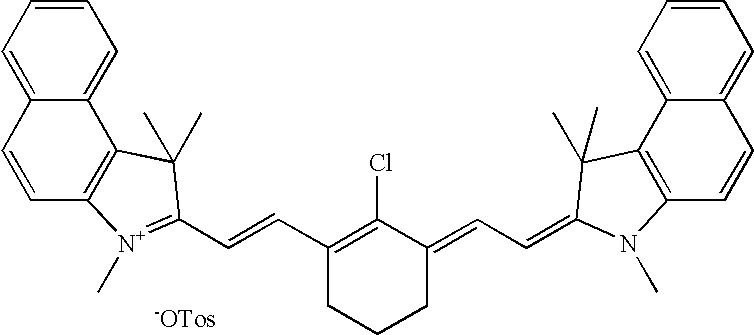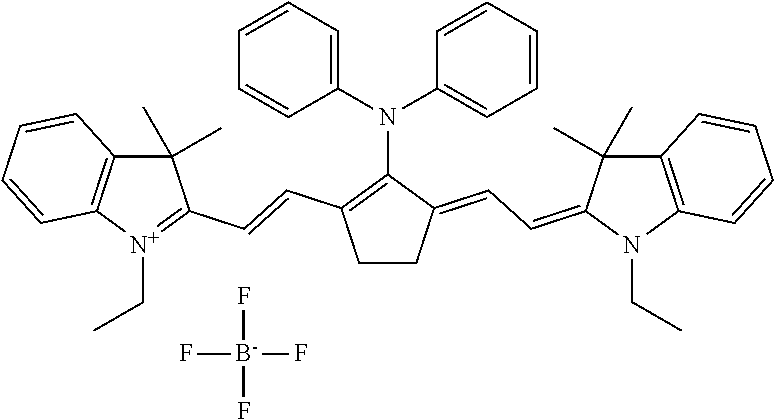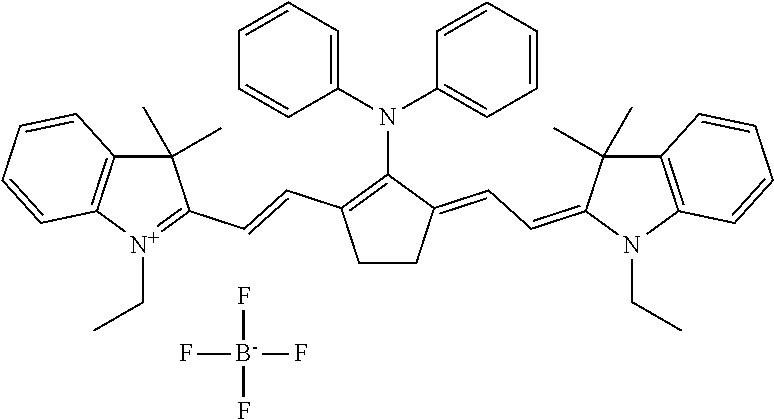Method of making a lithographic printing plate
a lithographic printing and printing plate technology, applied in the field of making lithographic printing plates, can solve the problems of reduced hydrophilic property of the surface of the support, poor resistance of the adjacent layer of the imaged area on the press, and poor toning resistance of the adjacent layer on the press, and achieve excellent cleaning and high run length. , the effect of high resolution
- Summary
- Abstract
- Description
- Claims
- Application Information
AI Technical Summary
Benefits of technology
Problems solved by technology
Method used
Image
Examples
examples
Preparation of Aluminum Support S-1
[0214]A 0.3 mm thick aluminium foil was degreased by spraying with an aqueous solution containing 26 g / l NaOH at 65° C. for 2 seconds and rinsed with demineralised water for 1.5 seconds. The foil was then electrochemically grained during 10 seconds using an alternating current in an aqueous solution containing 15 g / l HCl, 15 g / l SO42− ions and 5 g / l Al3+ ions at a temperature of 37° C. and a current density of about 100 A / dm2. Afterwards, the aluminium foil was then desmutted by etching with an aqueous solution containing 5.5 g / l of NaOH at 36° C. for 2 seconds and rinsed with demineralised water for 2 seconds. The foil was subsequently subjected to anodic oxidation during 15 seconds in an aqueous solution containing 145 g / l of sulfuric acid at a temperature of 50° C. and a current density of 17 Å / dm2, then washed with demineralised water for 11 seconds and dried at 120° C. for 5 seconds.
[0215]The support thus obtained was characterised by a surfac...
invention examples 5 and 6
[0250]In Invention Examples 5 and 6, the precursors PPP-13 respectively PPP-14 were image-wise exposed at an energy density of 150 mJ / cm2 and subsequently processed with Gum-1 as described in Invention Example 1.
[0251]The run length of the plate was tested on a Sakurai Oliver 52 printing press using K+E Novavit 800 Skinnex ink (trademark of BASF Drucksysteme GmbH) and 4% Anchor Emerald Premium 3520 fountain solution (trademark of ANCHOR), a compressible blanket and by using offset paper. The results of the printing test are summarized in Table 6.
[0252]
TABLE 6Results (run length).Image Resolution(smallest %dot reproducedPrintingon the prints atEXAMPLEPlateeach run length)numberPrecursor1K5K10K50KInventionPPP-131-2%1%1%1%Example-05InventionPPP-141%1%1%2%Example-06
[0253]In Invention Examples 5 and 6 the printing plates comprise an adhesion promoting compound and a second polymer. These examples demonstrate that images of a high resolution (1 or 2% dots) and without toning are reproduce...
PUM
| Property | Measurement | Unit |
|---|---|---|
| pKa | aaaaa | aaaaa |
| wavelength range | aaaaa | aaaaa |
| wavelength range | aaaaa | aaaaa |
Abstract
Description
Claims
Application Information
 Login to View More
Login to View More - R&D
- Intellectual Property
- Life Sciences
- Materials
- Tech Scout
- Unparalleled Data Quality
- Higher Quality Content
- 60% Fewer Hallucinations
Browse by: Latest US Patents, China's latest patents, Technical Efficacy Thesaurus, Application Domain, Technology Topic, Popular Technical Reports.
© 2025 PatSnap. All rights reserved.Legal|Privacy policy|Modern Slavery Act Transparency Statement|Sitemap|About US| Contact US: help@patsnap.com



